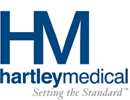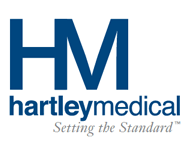I just read a fascinating article in The Wall Street Journal by Awi Federgruen regarding the drug shortages that provides insight as to why some of the shortages have come about, as well as recommendations to fix the debacle.
 The article more specifically discussed the shortage of two critical cancer drugs ““ methotrexate (for pediatric leukemia) and doxil (for ovarian cancer and AIDS-related sarcoma) ““ and how these shortages occurred when one of only four of our nation’s domestic suppliers, Benevue, closed its plant because of product safety concerns. The scary thing is that this is not the only case in which this has happened. The number of generic drug suppliers has diminished ““ due in large part to quality assurance concerns. According to the article, “supply disruptions are common, including the possibility that a facility completely shuts down for a protracted time because of quality or safety problems.” But why aren’t these companies taking the necessary steps to provide quality drug products? One reason: government’s oversight of manufacturing safety and quality.
The article more specifically discussed the shortage of two critical cancer drugs ““ methotrexate (for pediatric leukemia) and doxil (for ovarian cancer and AIDS-related sarcoma) ““ and how these shortages occurred when one of only four of our nation’s domestic suppliers, Benevue, closed its plant because of product safety concerns. The scary thing is that this is not the only case in which this has happened. The number of generic drug suppliers has diminished ““ due in large part to quality assurance concerns. According to the article, “supply disruptions are common, including the possibility that a facility completely shuts down for a protracted time because of quality or safety problems.” But why aren’t these companies taking the necessary steps to provide quality drug products? One reason: government’s oversight of manufacturing safety and quality.
The article states that the government has failed to allocate enough money to hire reviewers to evaluate the applications for new manufacturing facilities and manufacturing processes within existing facilities, as well as hire inspectors to visit these facilities. Applications for new facilities sit in an over year-long backlog that is in addition to the 15-month average drug review process. Additionally, the legal threats of class action lawsuits is a strong deterrent from making large investments. In 1967, there were 26 U.S. vaccine makers; today there are only six. Plants are shutting down, and new plants just aren’t getting the approval to manufacture drugs. Many current manufacturing facilities have outdated technologies that aren’t being replaced.
Federgruen also blames government’s stringent price controls for generic drugs, especially when purchased by Medicare or Medicaid. He states that, “Government price controls on generic drugs limit the manufacturers’ margin to 6% in many cases.” Low prices encourage drug makers to exit several markets, or reallocate their manufacturing capacity toward more profitable pharmaceuticals. Low prices also have a tendency to reduce the rationale for investments in better manufacturing technologies and processes.
In 2011, there were 267 drug shortages reported; today there is just under 240. Is this a drop? Yes. But most of these shortages remain unresolved.
Over the past month, Hartley Medical has been compounding medications for a number of physicians and hospitals that have been affected by the situation. We have an unwavering dedication to provide only the highest-quality sterile pharmaceuticals; therefore, we continue to compound these medications only to the highest of quality standards. We think first and foremost about patient safety.
If Hartley Medical can assist you in any way during these shortages, please contact us. We are here to serve you. Click here to see a list of drugs that are currently in short supply. To read the full article from which this post was derived, click here.
Source: http://online.wsj.com/article/SB10001424052970203986604577253242913478400.html?mod=googlenews_wsj


Leave A Comment